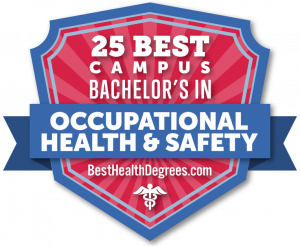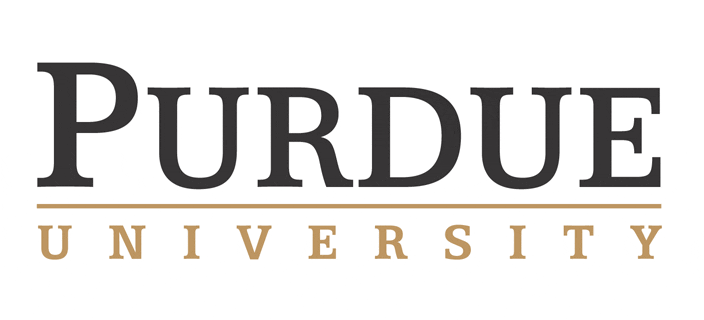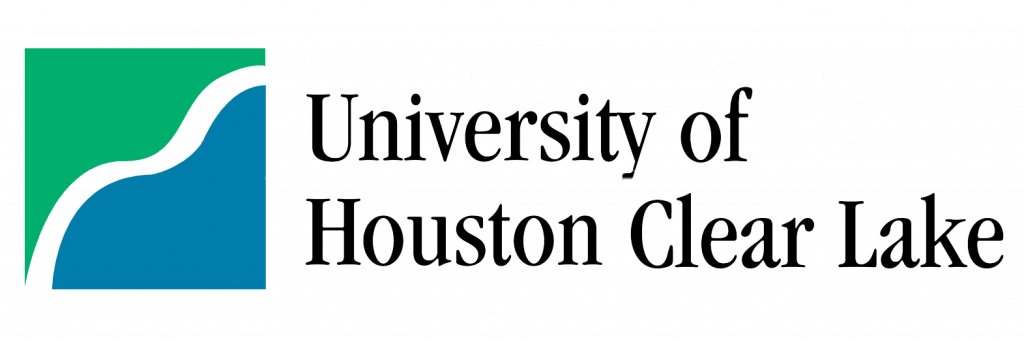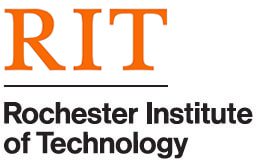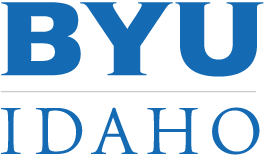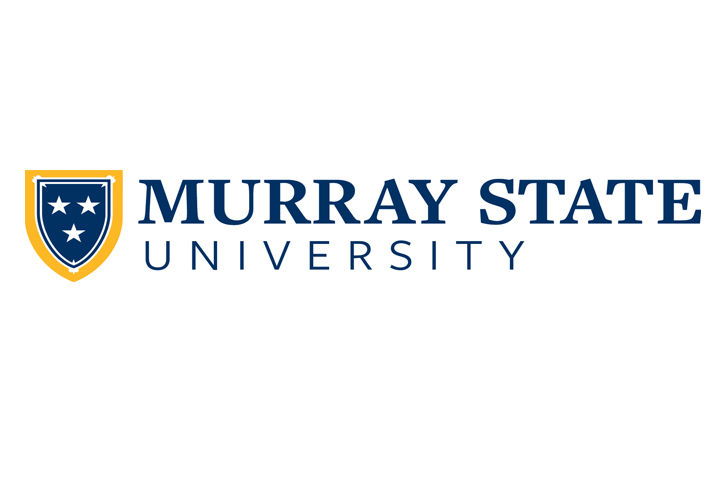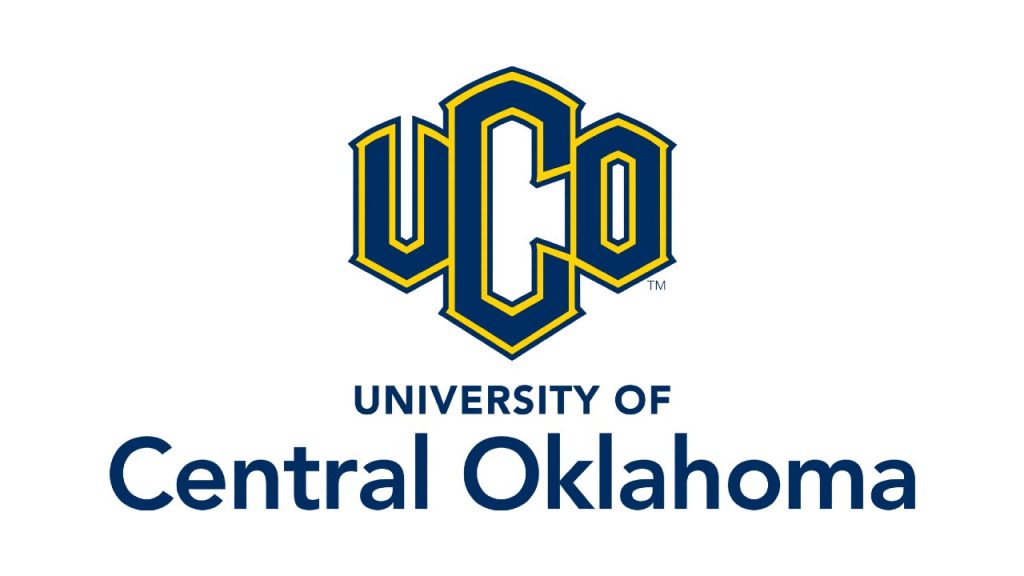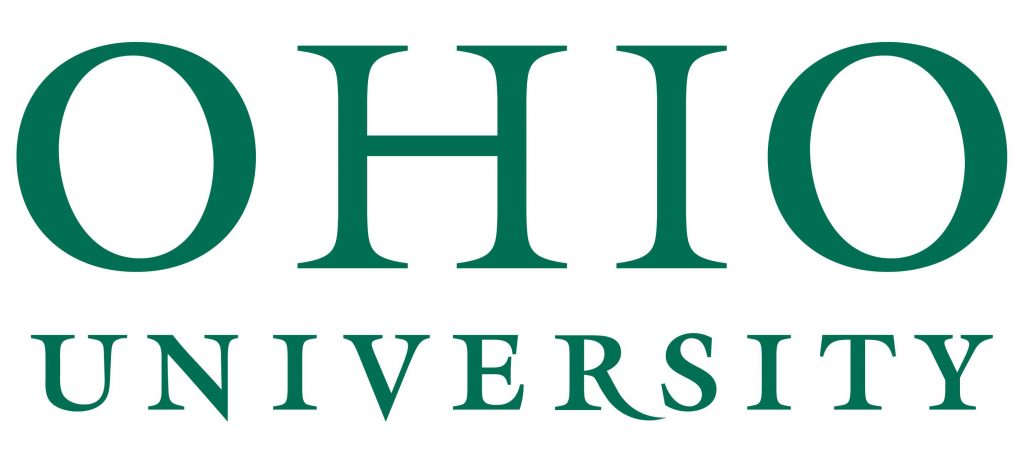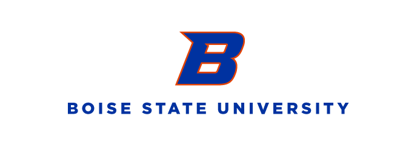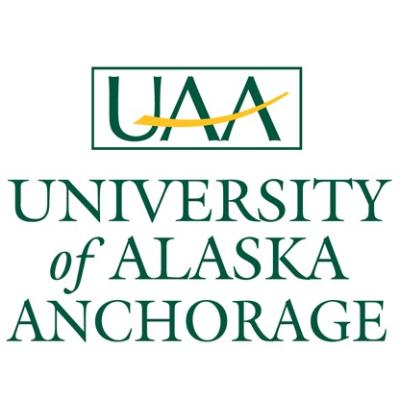Key Takeaways:
- This article focuses on colleges offering undergraduate safety degrees. Notable schools include Purdue University, University of Houston, and Sacramento State University.
- Bachelor’s degrees in Occupational Health and Safety address workplace health and safety issues.
- Safety programs are ranked based on factors like cost, reputation, and salary potential after graduation.
- Featured safety degrees include hands-on experience through internships and are often accredited, enhancing career prospects.
The best Colleges with Safety Degrees have occupational safety degrees to meet the needs of health and safety issues in the workplace. Health and safety issues in the workplace can be traced a long history of accidents and illnesses associated with dangerous and unhealthy work environments.
In 2020, the Bureau of Labor Statistics released the National Census of Fatal Occupational Injuries in 2019, citing a horrifying statistic that “…a worker died every 99 minutes from a work-related injury in 2019.”
Best Health Degrees has done an internet search of schools to identify some of the best bachelor’s degree programs in Occupational Health and Safety to aid in your school search. We compressed information to provide a general idea of graduate coursework, admission requirements, cost, school reputability, etc., along with additional school links. This ranking provides information for first-year students, but transfer students will follow the same program guidelines.
Our Method: Ranking the 25 Best Bachelor’s in Occupational Health and Safety Programs
To rank the 25 Best Bachelor’s in Occupational Health and Safety Programs, Best Health Degrees editors researched accredited, trusted programs. We ranked programs according to price, accreditation, reputation, and salary potential from our initial pool, using data from IPEDS and Niche, U.S. News and World Report, and other higher education rating publications.
1. Purdue University
This renowned Indiana university not only offers a four-year Bachelor of Science in Occupational Environmental Health Sciences (OEHS) program but a 4+1 BS/MPH (in cooperation with the university’s Department of Public Health) degree. Both programs have ABET accreditation. Additionally, the BS is a Qualified Academic Program (QAP) program by the Board of Certified Safety Professionals (BCSP).
The suggested curriculum requires 120 credit hours in general education subjects (humanities, math, science, etc.) and coursework in the OEHS major. Some classes you might take are Toxicology, Risk Assessment in Environmental Health, Introduction to Health Sciences Profession, Occupational Safety and Management and Culture, Principles of Epidemiology, and others. You may also participate in an internship working in one of several well-known companies such as Boeing, Ford, Caterpillar, etc. On-campus research projects work with Radiological and Environmental Management faculty or the study abroad program at the Dublin Institute of Technology in Environmental and Public Health.
Admission requirements include an application, self-reported grades, ACT/SAT scores (flexible for Spring, Summer, and Fall), and other documents as requested. First-year and transfer students will begin the admission process with an application.
Estimated Tuition Cost: $9,992-$28,794/per academic year
Fast Facts: U.S. News and World Report ranks Purdue University #17 in its Top Public Schools category and 10th best public institution by the Wall Street Journal/Times Higher Education
Interested? Check out the program site for this occupational safety and health degree!
2. University of Houston – Clear Lake
You may want to explore the BS in Occupational Safety and Health degree, which offers a choice between a concentration in Safety or Industrial Hygiene. This program is a Qualified Academic Program (QAP).
The overall curriculum is 120 credit hours. Students take university core requirements in Communication, Language, Philosophy and Culture, and American History. Courses in your OSH major will include studies in Anatomy and Physiology, Air Pollution Science, Environmental Safety and Health, Principles of Professional Safety, and more. Depending on your concentration, you’ll take classes in Fire Safety Engineering, Construction and General Industry Safety; Environmental Toxicology, Industrial Ventilation, Noice and Hearing Conservation, etc. Regardless of your concentration, you’ll complete an internship during your senior year that must be pre-approved by the program chair.
You’ll start admission with an application through ApplyTexas ($45 fee), submission of ACT/SAT test scores, and official academic transcripts from all schools attended.
Estimated Tuition Cost: $7,504-$20,752/per academic year
Fast Facts: UHCL has accreditation from ABET and ranks #48 in U.S. News and World Report’s Top Public School for Regional Universities West
Interested? Check out the program site for this occupational safety and health degree!
3. Sacramento State University
This is a BS in Public Health specializing in Occupational Health and Safety from Sacramento State, a part of the California State University System. The program trains you to be an attractive candidate for employers and prepares you for advanced studies in Public Health.
In addition to the university’s general education requirements, you’ll enroll in major classes in areas like Human Anatomy and Physiology, Introduction to Statistics, Epidemiology, Health Data Analysis, and Fieldwork in Health or Safety. Among the courses in your concentration are Occupational Health, Cause and Control of Occupational Loss, Fundamentals of Safety and Health, Occupational Health and Safety Laws and Regulations, and Introduction to Organic and Biological Chemistry (or Organic Chemistry Lecture–Brief Course). You’ll have a choice of three electives from a slate of classes such as Environment and Law, Environmental Toxicology, American Environmental History, and more.
First-year students must hold a high school diploma, GED, or California High School Proficiency Examination (CHSPE) as admission requirements. Additional documents requested are official academic transcripts, a Cal State Apply application submission, and a fee. Students may need to provide other materials if the school requests them.
Estimated Tuition Costs: $7,418-$19,298/per academic year
Fast Facts: Money ranked this school as one of its 2020 “Best Colleges in America,” and it ranks #22 in U.S. News and World Report’s Top Public Schools
Interested? Check out the program site for this occupational safety and health degree!
4. The University of Arizona
You have a choice of delivery options with this BS in Public Health with an Environmental and Occupational Health Emphasis from UA. The program is on the Tucson campus or online.
This four-year degree covers general education coursework and Public Health classes for a total of 120 credit hours. A sample of your classes includes Introduction to Public Health, Introductory Biology (with lab), Human Anatomy and Physiology, Health Care in the United States, Global Health, and also Introduction to Environmental and Occupational Health. You can also take Global Water, Sanitation and Hygiene classes, Topics in Environmental Justice, and participate in Field Work in Health Education.
Offered through the Mel & Enid Zuckerman College of Public Health, admission requires a two-tier process. You’ll start the admission process by applying to Arizona University. The school requires an application with a fee. It is $50 for Arizona residents and $80 for non-Arizona residents. You do not need an ACT or SAT test score. But you do need a high school diploma or GED. Other documents, such as academic transcripts, may be necessary as well. Once you’ve completed pre-requisite courses at AU, you’ll make an application for the Public Health Major.
Estimated Tuition Cost: $12,716-$36,743/per academic year
Fast Facts: Forbes ranks AU #127 in its Top Colleges 2021 rating, and U.S. News and World Report rates it at #46 in its Most Innovative Schools category
Interested? Check out the program site for this occupational safety and health degree!
5. Rochester Institute of Technology
You’ll earn a BS degree in Environmental Sustainability, Health, and Safety that offers a focus on best practices, sustainability, and protections to influence communities and industries.
As with most undergraduate degrees, you’ll study general education classes along with coursework in your major. Some major courses offered in the 126-credit hour curriculum are Introduction to Hydrology, Occupational Safety, EHS Accident Causation and Prevention, Corporate EHS Management, Environmental, Health and Safety Professional Communication, Environmental Monitoring and Measurement, etc. You’ll also complete a Capstone Project before graduation.
First-year students will need a high school diploma (or a GED), and ACT/SAT test scores aren’t required. You’ll submit a letter of recommendation and academic transcripts as part of the process. An application is necessary using either the Common Application or the RIT Application.($65 fee). You’re encouraged to talk with an admission advisor.
Estimated Tuition Cost: $51,240/per academic year
Fast Facts: RIT ranks #57 in U.S. News and World Report’s Most Innovation Schools and Forbes lists RIT at #177 in its Top Colleges in 2021
Interested? Check out the program site for this occupational safety and health degree!
6. Brigham Young University – Idaho
BYU-Idaho offers a BS with an Occupational Safety and Health major, designed to prepare you to enter the workforce, as the website says, “as safety, industrial hygiene, and environmental professionals.” The program also provides a strong foundation for graduate studies as well.
A 120-credit hour curriculum, this bachelor’s degree requires general education classes and core studies in Safety and Health, Science, and Electives. Subjects include Biostatistics, General Chemistry, Human Anatomy & Physiology classes, as well as major courses. Some of those classes are Environmental Health, Toxicology, Hazardous Materials Management, Accident Investigation and Prevention, and Introduction to Industrial Hygiene. You’ll also participate in an internship experience.
Admission criteria for BYU-I are reviewed in three areas: academic achievement, seminary, and church endorsements. Church of Jesus Christ of Latter-day Saints members in good standing are admissible to the university, and non-member applicants are required to abide by the Code of Honor and can be interviewed by their particular church or Church of Jesus Christ of Latter-day Saints leader. The application requires an ecclesiastical endorsement, and ACT or SAT test scores aren’t necessary for admission during the recent application cycles.
Estimated Tuition Cost: $4,300/per academic year
Fast Facts: BYUI ranks #16 in U.S. News and World Report’s Regional Colleges West category and Forbes rates it at #411 in its Top Colleges 2021 listing
Interested? Check out the program site for this occupational safety and health degree!
7. Illinois State University
Located in Normal, Illinois, ISU’s Department of Health Sciences offers a BS in Occupational Safety and Health degree which is Applied and Natural Science Accreditation Commission of ABET accredited.
You’ll take major courses in Chemistry, Safety Technology, Accident/Incident Investigation, Records and Evaluation, Safety And Society, Occupational Safety and Health Act (OSHA), Fire Protection and Prevention, Ergonomics, Human Anatomy And Physiology, Finite Mathematics, and others. You’ll also experience a Professional Practice: Safety under the supervision of an experienced safety professional, working in business and industry. A Senior Capstone Project is required prior to graduation. Additionally, you’ll take general education courses as part of the 120-credit hour curriculum in Fine Arts, Humanities, Social Sciences, etc.
University admission begins with an application, academic transcripts, and an optional personal statement. ACT/SAT test scores aren’t needed.
Estimated Tuition Cost: $15,319-$26,843/per academic year
Fast Facts: Niche ranks ISU #160/#691 of its Top Public Universities in America and is ranked #104 in Top Public Schools by U.S. News and World Report
Interested? Check out the safety and health management program site!
8. Central Washington University
Your BS degree in Safety and Health Management (SHM) from CWU will meet the Board of Certified Safety Professionals (BCSP) Qualified Academic Program (QAP) requirements, and you’ll be eligible to apply for Graduate Safety Practitioner® (GSP®) certification.
The curriculum is a blend of the university’s general education requirements, SHM foundational, technical, and professional management classes for 125-127 credits. Foundational classes are General Psychology, Introduction to Chemistry, Human Physiology, and others. Technical courses include General Industry Safety and Health, Risk Management Principles and Practices, Construction Safety and Health, Evolving Issues in Safety and Health Management, etc. There is also a Capstone Project as well as an Internship.
You’ll start your admission process with an application ($60 fee) which requires you to have a minimum 2.0 GPA and submission of official academic transcripts. CWU requires you to complete the Free Application for Federal Student Aid (FAFSA®) or the state financial aid application, Washington Application for State Financial Aid (WASFA). The WASFA is for students who haven’t filed the FAFSA® or are ineligible to make applications for federal assistance.
Estimated Tuition Cost: $8,444-$24,520/per academic year
Fast Facts: Niche ranks CWU #315/691 in its Top Public Universities in America ranking, and its one of Forbes Top Colleges in 2021
Interested? Check out the safety and health management program site!
9. Murray State University
You’re given a choice between two concentrations with this BS in Occupational Safety and Health (OSH) from this Kentucky university. Both concentrations hold ABET accreditation.
The program offers specialties in the Occupational Safety and Health track or Environmental Health and Safety track. Among the classes in this 120-credit hour curriculum are general education and OSH foundational courses. They include OSH Standards, Fundamentals of Management, Fire and Emergency Preparedness Preplanning, Fundamentals of Industrial Hygiene, and others. Depending on your specialty track, the program offers classes in Occupational Diseases, Fundamentals of Air Pollution and Control, Emergency Medical Training, Loss Control Management and Measurement. You’ll also have a wide choice of electives to support your overall training. Both specialties require an Internship.
Some of the admission requirements are a high school diploma (or GED certificate) and you’ll self-report your GPA. Academic transcripts and other documents may be requested. Murray State University is ACT/SAT test-optional, depending on your overall GPA. You’ll complete an application ($40 fee). You’ll make a supplemental application for the OSH program after earning 30 credit hours at MSU.
Estimated Tuition Costs: $9,168-$18,348/per academic year
Fast Facts: Murray State University is ranked #11 in U.S. News and World Report’s Top Public Schools and Forbes includes it in its Top Colleges 2021 at #416
Interested? Check out the safety and health management program site!
10. Grand Valley State University
Grand Valley State University is located in Allendale, Michigan, and opened in 1960. You can earn a BS in Occupational Safety & Health Management (OSHM) which is accredited by the Applied and Natural Science Accreditation Commission of ABET.
The curriculum for this major requires you to complete essential classes in Anatomy and Physiology, Introduction to Occupational Safety and Health Management, Applied Statistics, etc. as well as foundational courses in OSHM. Topics in OSHM are Hazard Control, Critical Incident Analysis, Fire Science, Principles of Industrial Hygiene, Safety and Health Program Development, and Safety and Health Administration, among others. You’ll choose 9 hours in electives from various classes such as Health Care Facility Safety, Construction Safety, Environmental Compliance Application, and others. The program requires you to complete an Internship in Occupational Safety and Health Management.
You’ll file the admission application (either online or paper) to start the process. Be prepared to submit final high school transcripts and other documents. ACT/SAT test scores aren’t required for fall admission in 2022.
Estimated Tuition Cost: $13,244-$18,844/per academic year
Fast Facts: GVSU ranks at #426/1,652 in Niche’s Best Colleges in America and #505 in Forbes‘ Top Colleges 2021
Interested? Check out the occupational health and safety program site!
11. Northeastern State University
You’ll want to review this BS in Environmental, Health, and Safety Management from this Oklahoma university with two concentrations in Safety Management or Environmental Management. NSU also offers an Accelerated Bachelor’s to Master’s Degree Program, allowing you to earn both your bachelor’s and master’s program in less time than with conventional programs.
You’ll take 46 credit hours of general education courses along with 54 credit hours in your major. The BS requires core studies in Applied Safety Engineering, Introduction to Environmental Management, Industrial Hygiene, Leadership in Organizations, and more. Depending on your concentration, you’ll continue with classes in Environmental Contaminants, Process Safety Management, Industrial Air Pollution Control, Process Safety Management, Ergonomics, Life Safety, and Building Codes. The overall coursework also includes elective courses.
First-time college students are required to submit an application. Additional admission documents requested include academic transcripts demonstrating graduation from high school (or having a GED certificate), a 2.7 overall GPA, and ACT test scores.
Estimated Tuition Cost: $6,915-$15,315/per academic year
Fast Facts: NSU ranks #50-#66 in U.S. News and World Report’s Top Public Schools. NSU was established in 1846 by the Cherokee National Council
Interested? Check out the occupational health and safety program site!
12. University of Central Oklahoma
Here’s another Oklahoma university that offers a Graduate Safety Practitioner (GSP) Qualified Academic Program (QAP) designated BS in Occupational Safety program.
The curriculum requires 124- credit hours, including 61 credit hours in your major. Some topics you’ll study are Introduction to OSHA, Advanced Safety Management, Industrial Hygiene, Safety Education, Construction Safety, Introductory Chemistry and Lab, Legal Aspects of Occupational Safety, a Capstone Project, and the completion of a Safety Senior Exam. The Capstone is chosen from either Safety Program Development or an Internship in Occupational Safety. This program offers an impressive list of elective course offerings from which you can choose to reach your 124-hour requirement.
You’ll make an application ($40 application fee) and admission requires you to submit academic transcripts from your high school or a GED certificate and is an ACT/SAT test-optional university through 2026.
Estimated Tuition Cost: $7,817-$18,704/per academic year
Fast Facts: UCO was founded in 1890 as the Territorial Normal School and Forbes ranks UCO #261 in its Public Colleges ranking
Interested? Check out the occupational health and safety program site!
13. Ohio University
The College of Health Sciences and Professionals at this Ohio university has a BS in Occupational Hygiene and Safety that prepares you to enter the field identify, evaluate, and maintain safe workplace environments for workers.
Requiring 122 credit hours, this program has core coursework in Occupational Safety and Health, Toxicology for the Health Sciences, Introduction to Environmental Health and Safety, Community Health Epidemiology, Physical Hazards Evaluation and Control, and also Public Health Emergency Response. Additionally, students can choose a wide slate of electives in classes like Medical Terminology, Introduction to Ethics, Air, Waters, and Waste, Water and Pollution, and also History of Public Health Disasters. And, they complete general education classes as required by the university.
Applications are through the Common Application or an alternative Ohio University Application. Each has a $50 fee. Admission to OU reviews your high school studies, GPA, and its ACT or SAT test optional. However, you must submit official academic transcripts.
Estimated Tuition Cost: $12,612-$22,406/per academic year
Fast Facts: Niche ranks OU #90/#691 in its Top Public Colleges in America, and the school ranks #319 in Forbes’ Top Colleges
Interested? Check out the program site! occupational health and safety program site!
14. Marshall University
Located in Huntington, WV, Marshall University awards a BS in Occupational Safety and Health degree, which is ABET-accredited and is designed to prepare you for entry-level positions in the field.
The curriculum for this degree includes general education studies in the humanities, math, sciences, etc., and is designed to provide you with skills in critical thinking, professional management, communication, and leadership. Additionally, this major covers such classes as Development & Management of Occupational Safety Program, Intro Applied Anatomy & Physiology, Safety Evaluation and Measurement, Construction Safety, Incident Investigation Technology, Industrial Hygiene, and others. You’ll also complete an internship before graduation.
General admission requirements for first-year students require you to hold a high school diploma (or GED certificate) with at least a 2.0 GPA, you’ll also need to submit official academic transcripts, ACT/SAT test scores, as well as a valid immunization record (including measles, rubella, or MMR, etc.). The application requires a $40 fee.
Estimated Tuition Cost: $8,512-$19,366/per academic year
Fast Facts: Marshall was established in 1837 and named after Supreme Court Chief Justice John Marshall (1755-1835) and is ranked #147 in U.S. News and World Report’s Top Public Schools
Interested? Check out the program site! occupational health and safety program site!
15. Southeastern Louisiana University
Southeastern Louisiana University in Hammond, Louisiana, has a BS in Occupational Safety, Health, and Environment (OSHE) degree which is ABET-accredited and provides a comprehensive program that will prepare you to work as a professional in the field.
General education courses, required by the university, are part of the degree program the OSHE curriculum offers classes in Fire Protection and Prevention, Safety Laws, Regulations, and Standards, Construction Safety, Safety & Health Program Management & Administration, System Safety Methodologies, Ergonomics, and an Internship. You’ll also take Professional Elective courses to round out your education.
As an entering first-year student, you’ll submit admission materials showing a minimum of a 2.5 GPA from your high school career (or, GED or HiSET).
Estimated Tuition Cost: $8,289-$20,767/per academic year
Fast Facts: Forbes ranks SLU #228 in its Top Public Colleges and U.S. News and World Report considers it #93 Regional Universities South
Interested? Check out the occupational health and safety program site!
16. Boise State University
This BS in Public Health degree offers an Environmental and Occupational Health and Safety (EOHS) emphasis. The school suggests this degree will qualify you for positions such as an Occupational Safety Specialist, an Environmental Compliance Office, or an Environmental Health Scientist.
You’ll take 120 credit hours to earn this degree, which includes general education courses as required by the university and coursework in your major. Among those classes are studies in Evidence-Based Public Health, Toxicology for Environmental & Occupational Health, Introductory Microbiology, Health Policy and Ethics, and Epidemiology, and seminars and lectures. You’ll also participate in an Environmental Health Internship. The curriculum trains you to identify community and workplace risks, injuries, and illnesses.
Among the admission requirements for Idaho residents are an application ($50 fee for non-Idaho residents), official high school academic transcripts, and a personal statement. You’ll want to review the admission details through the BSU Undergraduate Catalog.
Estimated Tuition Cost: $8,068-$24,988/per academic year
Fast Facts: BSU ranks #156-#209 Top Public Schools by U.S. News and World Report and Niche rates it #950/#1,601 in its Best Value Colleges in America
Interested? Check out the occupational health and safety management program site!
17. Millersville University
With its campus in Millersville, Pennsylvania, Millersville University was established in 1855 and has a current student population of over 6,000 students. MU offers a BS in Occupational Safety & Environmental Health Program (OSEH), accredited by ABET.
This is a four-year curriculum, that includes general education requirements, as well as major coursework. You’ll enroll in classes in the major such as Industrial Hygiene – Physical Hazards, Environmental Health, Industrial Hygiene- Chemical & Biological Hazards, System Safety, Topics in Occ. Safety & Env. Health, and others. The program requires an Internship (one semester in duration) and is completed in your final semester, where you’ll work 40 hours a week and gain valuable, real-world experience in OSEH. Millersville University provides four laboratories, especially for the OSEH program.
Among the admission requirements to become a first-year MU student, you’ll complete an application and provide an official high school transcript, ACT/SAT test report, letters of reference, and a personal statement.
Estimated Tuition Cost: $11,665-$21,635/per academic year
Fast Facts: MU is ranked #28 in Top Public Schools by U.S. News and World Report and #188 in the Northeast top colleges by Forbes
Interested? Check out the occupational health and safety management program site!
18. University of Central Missouri
You’re given three options for earning this BS in Occupational Safety with specialty choices in Environmental, Safety, or Health Science Management concentrations.
Among the foundational courses, you’ll take classes in Environmental Compliance, Applied Sciences for Professional Studies, Industrial Hygiene, Ergonomics in Safety and Health, Accident Investigation, Occupational Risk Management, Systems Safety, Human Biology, etc. You’ll also participate in an Internship and take general education courses as required by the university. NOTE: You may consider enrolling in the Occupational Safety BS/Occupational Safety Management MS (Accelerated Program) either online, hybrid, or on the Warrensburg, Missouri campus.
UCM considers a wide scope of factors in considering students for admission. Among those application, considerations are your high school GPA, letters of recommendation, the personal statement letter, and activities in your community and involvement. UCM is an ACT/SAT optional school.
Estimated Tuition Cost: $8,306-$15,434/per academic year
Fast Facts: UCM ranks #16 in U.S. News and World Report’s Top Public Schools category and is cited as one of Forbes’ America’s Top Colleges
Interested? Check out the occupational health and safety management program site!
19. Jacksonville State University
This Bachelor of Science program in Occupational Safety and Health Management at Jacksonville State University in Alabama is accredited by the Association of Technology, Management, and Applied Engineering (ATMAE). Graduating with this degree will make you eligible, as a Graduate Safety Professional to apply for Certified Safety Professional.
With this curriculum, you’ll take the university’s general education coursework along with your major classes. Some of those classes are Construction Safety, Industrial Hygiene, Industrial Training, Hazardous Material Technology, Industrial Safety and Health, Industrial Ergonomics, Hazard Control Technology, Principles of Management, and more. Additionally, you’ll take a Senior Seminar as well as participate in an Industrial Internship.
JSU is test optional through 2023 for admission consideration. You’ll need a high school diploma (or GED certificate) and complete an application (with a $35 fee) to begin the process. Be prepared to submit documents as requested, such as academic transcripts.
Estimated Tuition Cost: $11,120-$20,840/per academic year
Fast Facts: This is the only program of its type in Alabama and U.S. News and World Report ranks JSU #38 in its Top Public Schools in the South category
Interested? Check out the occupational health and safety management program site!
20. University of Alaska – Anchorage
You can earn a BS in Occupational Safety and Health (the only such program in Alaska) which features job training through internships and other practical experiences. Courses are offered online and during the evenings.
The program requires you to take general education classes as well as core OSH coursework. Among the core curriculum are topics such as Injury Prevention and Risk Management, Fundamentals of Industrial Hygiene, Principles of Ergonomics, Human Factors, Risk Management for Safety and Health, etc. You’ll also be eligible to choose 9 hours of electives in Selected Topics in Occupational Safety and Health as well as Advanced Occupational Safety and Health Internship. A senior Capstone Project allows you to apply what you’ve learned to real-world situational problems.
Admission consideration requires a high school diploma (or GED certificate) and self-reporting of your GPA (a minimum of 2.5 is required) along with an application. An official academic transcript will be requested. While not used in determining your admission, standardized tests are used in deciding math and writing course levels.
Estimated Tuition Cost: $8,622-$25,228/per academic year
Fast Fact: UA-A ranks #510 in Forbes Top Colleges 2021 and #71 in the Regional Universities West category of U.S. News and World Report
Interested? Check out the occupational health and safety management program site!
21. Slippery Rock University
Located in the Greater Pittsburgh Region of Pennsylvania, SRU awards a BS in Safety Management degree developed to prepare you for careers in Risk Management, Compliance, Safety, and more.
This curriculum covers general education in the humanities, physical and social sciences, etc. Classes in the Safety major include studies in Principles in Industrial Hygiene, Legislative Compliance-General Industry, Injury and Damage Incidents Evaluation, Organizational Behavior, Security in the Workplace, Contemporary Safety Topics and Issues, and more. An Internship provides experience in a real-world work environment. When you graduate, you’ll be eligible to pursue the Certified Safety Professional (CSP) certification.
To be considered for admission, you’ll begin with an application (with a $30 fee) and provide additional documents. You’ll be asked for official high school transcripts. If you have a 3.25 or higher GPA, you’ll automatically be admitted to SRU, but you should still apply if your GPA is lower. SRU is now ACT and SAT test optional.
Estimated Tuition Cost: $9,984-$14,092/per academic year
Fast Facts: SRU ranks #22 in U.S. News and World Report’s Top Public Schools-Regional Universities West and #43 in its Best Value Schools
Interested? Check out the occupational health and safety management program site!
22. University of Findlay
This Ohio University was established in 1882 and has a BS in Environment, Health, Safety (EHS), and Sustainability degree which offers four concentrations. This ranking concentrates on Safety and Occupational Health.
Your degree will include general education studies along with core EHS and Sustainability classes. Some foundational topics include Introduction to Anatomy and Physiology, Public Health Microbiology, OSHA Practice and Standards, Management of Safety and Health Programs, Epidemiology and Biostatistics, Environment and Society, Basic Organic and Biochemistry/Lecture/Lab, Emergency Management and Law, and others. The program also provides a paid internship while you’re still in school.
Among the admission requirements for the University of Findlay, you’ll need to have a high school diploma (or GED certificate), a 2.5 GPA, and provide academic transcripts. Additionally, ACT/SAT test scores are requested, but if you’re unable to take the test due to COVID-19, your application can be reviewed based on a writing sample, an academic letter of recommendation, and an interview with a UF admission advisor. The University of Findlay uses the Common App for applications.
Estimated Tuition Cost: $36,484/per academic year
Fast Facts: The University of Findlay ranks as one of U.S. News and World Report’s Best Colleges for 12 consecutive years and is ranked #410/#1602 Best Value Colleges in America by Niche
Interested? Check out the occupational health and safety management program site!
23. Fairmont State University
This West Virginia school offers a BS in Occupational Safety with ABET accreditation that emphasizes health hazard control, compliance, ergonomics, and more.
The curriculum is a 2+2, flexible program in which you’ll earn your associate degree at FSU prior to your bachelor’s studies. You’ll take core classes in your major, including studies in Human Biology, Application of Safety Strategies, Ergonomics & Human Factors, Human Anatomy and Physiology, Safety Management and Concepts in Accident Prevention, and also Disaster Preparedness and Emergency Systems. You’ll also participate in a Safety Internship in employee safety and health.
To submit an application for admission and provide documents such as your high school transcript (or GED/TASC). Applicants need at least a 2.0 high school GPA and ACT/SAT scores may be required. Additionally, prospective students must upload MMR, Tetanus, Meningococcal Vaccine and other immunization records. The COVID-19 vaccine is highly recommended.
Estimated Tuition Cost: $7,738-$16,814/per academic year
Fast Facts: FSU has accreditation from the Higher Learning Commission. And U.S. News and World Report ranks it in its Regional Universities South category
Interested? Check out the occupational health and safety management program site!
24. Keene State College
Established in 1909, this New Hampshire College offers more than 40 areas of study, including this BS in Safety and Occupational Health Applied Sciences.
Among the core classes in this curriculum study in Human Factors in Safety, Industrial Hygiene, System and Behavioral Sciences, Safety Training Methods, Law and Ethics in Safety, Safety Chemistry, Occupational Safety, Health Hazard Identification, and a choice of safety electives. The department offers several electives such as Risk Management, Critical Incident Response, Special Topics in Safety, and others. A Capstone Project is required in Innovative Safety Leadership. The program strongly encourages an Internship in either Safety or Advanced Safety to provide you with practical experience.
You’ll begin the admission process by completing either a Keene State College Application or the CommonApp. The KSC application is free, and you’ll pay $50 for the CommonApp. You may need to provide supplemental materials such as your official high school transcript or High School Equivalency Test (HSE), and General Equivalency Diploma (GED). ACT and SAT scores are optional. Additionally, the program encourages letters of recommendation.
Estimated Tuition Cost: $14,638-$24,350/per academic year
Fast Facts: Ranks #9 in U.S. News and World Report’s Best Schools and is one of The Princeton Review’s Best Northeastern Schools
Interested? Check out the occupational health and safety management program site!
25. Indiana University of Pennsylvania
As the name suggests, this university is located in Indiana, Pennsylvania. The Department of Safety, Health, and Environmental Applied Sciences website calls this BS degree “…(a) small program with a national reputation…”
The course pathway requires general studies in Social and Natural Sciences and Math along with program-specific requirements. You’ll take classes offered in Principles in Safety, Ergonomics, Safety, Health, and Environmental Communications, Hazard Prevention Management, Introduction to Occupational Safety and Health, Process and Systems Safety, Ethics and Professionalism, etc. The degree also has you take additional classes in Human Biology, Physics, and business electives. An Internship is an integral part of degree completion.
IUP admission doesn’t require SAT test scores, but you do need to have a high school diploma (or GED), an official academic transcript, and an application. You should provide a personal essay, letter(s) of recommendation, AP scores, and/or transcripts for any college courses you’ve taken.
Estimated Tuition Cost: $13,144-$18,897/per academic year
Fast Facts: IUP is one of U.S. News and World Report’s Top Public Schools and The Princeton Review places it in its Best 387 Colleges
Interested? Check out the occupational health and safety management program site!
What is Occupational Safety and Health?
From farms to factories, people are injured, made ill, or die from unsafe practices. We’ve all seen historic pictures of miners (adults and children) working in poorly ventilated and dangerous mines. Some have Black Lung Disease, have other diseases or injuries, or even die. In 1911 the Triangle Shirtwaist Factory fire horrified the country when 146 women died. They were locked in rooms by factory owners to prevent theft. The examples are, unfortunately, many.
President Richard Nixon, in 1970, signed the Occupational Safety and Health Act (OSHA), enacted to develop and maintain regulations and health standards across the board for employees. State and federal governments began acting as regulators to provide employees with safe and healthy environments.
As a result of this legislation, colleges and universities created academic programs to train experts to examine, analyze, and develop safety measures across a wide variety of occupations.
Why Should You Get a Bachelor’s in Occupational Health and Safety?
Answering that question depends on your interests and career goals. A degree in this field will open several employment options for you in assuring employees working in various areas in health care, industry, construction, manufacturing, management, and more.
You’ll develop the tools and skills necessary to effect genuine change in your field to examine health and safety concerns, make procedural changes, develop a healthy and safe organizational culture, ensure OSHA and regulatory compliance, etc.
How Do You Find the Right Program?
ACCREDITATION
The programs in this ranking are all accredited by independent agencies such as the Higher Learning Commission and other Department of Education (DOE) recognized agencies. Some programs have specialty accreditation. You should look for programs accredited by organizations like the Applied Science Accreditation Commission of Accreditation Board for Engineering and Technology (ABET), Association of Technology, Management, and Applied Engineering (ATMAE), and the BS is a Qualified Academic Program (QAP) by the Board of Certified Safety Professionals (BCSP). The QAP meets the credentialing requirement for Certified Safety Professional (CSP) certification.
Many schools require you to complete the Free Application for Federal Student Aid (FAFSA®). Schools frequently use the FAFSA scholarship consideration and determine the amount of federal student aid for which you may qualify.
What Can I Do with a Degree in Occupational Health and Safety?
Careers in OHS are many and expected to grow by 5%, according to the Bureau of Labor Statistics (BLS), which is as fast as average for all occupations. Employment in manufacturing/industry, construction, hospitals/health systems, local, state, and federal government agencies, and consulting services, are examples of employment for entry-level positions.
As described by the Occupational Health and Safety Administration (OSHA), a BS in this field will qualify you as a specialist or technician. As such, you’ll be responsible for employing and enforcing safety regulations developing processes, analyzing and writing reports, investigating accidents, incidents, or complaints, and more. Some job titles include Risk Manager, Compliance Officer, Industrial Hygienist, Safety Engineer, Environmental Health and Safety Director or Manager, Safety Coordinator, etc. Other careers, as listed by the BLS, include
- Health and Safety Engineers (more from BLS)
- Construction and Building Inspectors (more from BLS)
- Environmental Science and Protection (more from BLS)
- Fire Inspectors (more from BLS)
- Environmental Scientists and Specialists (more from BLS)
- Emergency Management Directors (more from BLS)
How Much Can You Make with a Degree in Occupational Safety and Health?
The BLS reports salaries for Occupational Health and Safety specialists ranging from $73,740-$77,370 and $44,140-$58,370 for OHS technicians, depending on where you live and your place of employment. You can earn approximately $20,000 more annually with certification.
PayScale publishes an average national salary of $72,000 annually for a bachelor’s prepared Occupational Health and Safety professional. Salary reports an annual average of $73,365 to $83,199 for specialists.
Related:
- Fastest Online Bachelor’s in Occupational Health and Safety
- Best Online Bachelor’s in Occupational Health and Safety Programs
- Fastest Online Health Care Management Bachelor’s Programs
- Best Online Health Care Management Bachelor’s Programs
- Best Online Counseling Master’s Programs
- Best Online Psychology Master’s Programs
- Best Public Health Bachelor’s Degrees
- Fastest Online Psychology Master’s Programs
- Best Counseling Bachelor’s Programs
- Best Online Counseling Masters Programs
- Best Medical Billing and Coding Degrees
- Best Counseling Master’s Programs
- Fastest Online Counseling Master’s Programs
